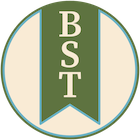Growing up in church has its advantages and disadvantages. One benefit is you’re exposed to the Bible at a young age and become well acquainted with it, even if you don’t understand it. But, a drawback is that you can lose your appreciation for the Bible over time. Yet, someone who becomes a believer later in life has this appreciation that you’ve since lost. Nevertheless, I appreciated being taught a general overview of Scripture. Along with the names and order of the books of the Bible, I learned a basic study method called a Bible survey.
To this day, Bible surveys remain a regular part of my Bible study. Whenever I study a new book of the Bible, it begins with a Bible survey, even if I’m revisiting a book I’ve already studied. That is why I am excited about today’s Bible study tip. I’m going to show you how to do a Bible survey study. This method is one of the best ways to get a general overview of the Bible and its structure. In this tip we will cover the following:
- What is a Bible survey?
- Why would you use it?
- Bible study tools for Bible surveys
- How to do a Bible survey
So, if you’re ready, let’s dive in!
What is a Bible Survey?
At its simplest, a Bible survey is a general overview. When we look at the Bible, it is 66 individual books compiled into a single book, divided into two testaments (Old and New). At a glance, that can be overwhelming. This is where Bible surveys help. They give you the big picture without getting lost in the details.
To further explain, let’s imagine the Bible as a country, like the United States. The entirety of the Bible, from Genesis to Revelation, is like traveling from coast-to-coast. You could get in your car and drive cross-country. In this scenario, that would be equivalent to doing a verse-by-verse study through each book of the Bible. Sure, you will see the individual features that make each book unique; but, after a while the trip becomes exhausting and you forget what you’ve read. You might even want to call it quits.
Yet, what if you took the same trip by another means of travel? What if, instead, you got in a plane and flew coast-to-coast? Now you’re seeing those same features but from a different vantage point, and in a much broader fashion. No longer are you looking at the finer details, like individual trees and buildings; now you’re seeing entire plots of land, long stretches of rivers, and mountain ranges. You cover the same ground, but you do it in a faster, less fatiguing manner.
A Bible survey is like flying in a plane. You’re getting a high-level look at books of the Bible without becoming engulfed by the details.
The analogy isn’t perfect, but you get the idea. Bible surveys are meant to give you the big picture of what a book of the Bible is about. And, when done 66 times, you get the big picture of the Bible from Genesis to Revelation.
A Bible survey is like flying in a plane. You’re getting a high-level look at books of the Bible without becoming engulfed by the details. Share on XWhy Bible Surveys?
Before we get into the steps of completing a Bible survey, it’s important to first talk about why you would want to do one. I mean, why not read the introductions in your study Bible and be satisfied with that? While that is certainly an option, and one I’ve used in the past, it doesn’t provide longterm benefit to your spiritual growth. So, here are some reasons why Bible surveys matter:
- A Bible survey prepares you for an in-depth study of a book of the Bible
- Bible surveys challenge you to think through the structure of books of the Bible and why each author organized the material the way they did
- Bible surveys help you know which books of the Bible to turn to when facing difficult life situations
- Knowing the basics of a book aides all areas of Bible study
- The knowledge gained from Bible surveys can bolster your evangelism
- Bible surveys help with Scripture memorization
There are more ways a Bible survey can help your biblical knowledge and spiritual growth, but these are just a few ways that they help. In summation, a general overview of each book of the Bible equips you to study God’s Word in a myriad of ways.
Bible Survey Tools
Unlike some Bible study methods that you can complete with nothing more than a Bible, a Bible survey is a study method that requires having some tools at your disposal. If you’re still building your library, I recommend checking out our tip on how to build a library, as well as our recommended resources. That said, you probably own at least one of these items mentioned below. If not, there are plenty of free online tools where you can obtain this information.
When it comes to Bible surveys, here are the tools that will help you get the information you need.
Bible Surveys
One of the best tools for helping with a survey study is, go figure, a Bible survey book. These are books that typically go from Genesis to Revelation, providing essential information about each book of the Bible. In it you’ll learn things like the author, date, purpose, and key themes and background details. Some surveys go into great detail and provide far more information than you need, making them good reference material.
There are many surveys available, and no one is better than another. A search on a site like Olive Tree for “survey” returns an abundance of resources.
Bible Handbooks
Similar to a Bible survey, a Bible handbook contains much of the same information. Bible handbooks often include maps and other basic biblical information that may prove useful in your study. Where a Bible survey is focused primarily on giving an overview of the Bible, a Bible handbook is more of a general knowledge resource, providing more than just overviews.
Study Bibles
A good study Bible will have everything you need to complete your survey study. Each book introduction is essentially a Bible survey in and of itself, giving you all the information at a glance. One such Bible is the ESV Study Bible, which remains one of my favorites. Within each introduction you will find the author, date, reason for writing, key themes, an outline, and more.
A good study Bible will have everything you need to complete your survey study. Share on XCommentaries
A Bible commentary is another good source of information for your Bible survey study. The depth of information you get varies from commentary to commentary. In a single volume commentary you can expect to find the amount of information equivalent to a study Bible or small handbook. Yet, with a multi-volume commentary set you can expect a fuller examination of the book’s introductory material. More often than not, a commentary is overkill for a Bible survey, but it’s nice to know it’s an option.
Bible Dictionaries
Lastly, a Bible dictionary can also be useful in your Bible survey study. Most dictionaries include an entry for each book of the Bible and give you some general information. Some dictionaries give you just as much information as you’ll find in a Bible handbook or survey, whereas others only give you the bare essentials. Nevertheless, it’s a good source to fill out your study if you find the other options lacking.
How to Do a Bible Survey
The steps to complete a Bible survey are straightforward, but the process requires both work and research. With at least one of the above tools at your side, you are ready to begin your study.
The goal with a Bible survey is to walk away with your own abbreviated version of a book introduction, like you would find in your study Bible. The reason you want to do it yourself is so you can better internalize the book’s contents and not simply take someone else’s word for it.
The process contains six steps:
- Get the Background Information
- Identify the Book’s Theme and Subject
- Find the Book’s Divisions
- Title Each Chapter
- Outline the Book
- Summarize the Book
So, let’s begin.
Step 1: Get the Background Information
The first step is finding all of the background information so you can make sense of the book. The objective is answering questions like:
- Who wrote the book?
- When was the book written?
- Who was the book written to?
- Why was this book written? What was going on in history that might have influenced this book?
Much of this information can be gleaned directly from a Bible survey book or study Bible. Some of the answers will be obvious, like we know the book of Romans was written by Paul to the church in Rome (because the first few verses tell us this). But, the most important details, such as background information, are only found through the use of your study tools.
As you find the answers, jot them down in a notebook. There’s nothing like taking your own notes, instead of just reading it in a book. Write down the highlights and details that are worth remembering.
With these answers in hand, you have a basic framework for understanding the book.
Step 2: Identify the Book’s Theme and Subject
The next step in the Bible survey process is identifying the book’s key theme(s) and subject(s). The answer is often readily available in either your handbook or study Bible, which is fine to consult. But, I would challenge you to take time to read through the book, especially if it’s a shorter one, and identify these items yourself. Once you’ve done the work yourself, you should consult your study tools to compare notes.
While the authors of our study tools have lots of theological degrees, they take the same steps to get the answer. So, it’s worth putting in the effort to do it on your own. This allows you to actively engage the text of Scripture as you uncover the book’s overarching themes and subjects. And be sure to write these down in your notebook. Remember, you, too, are a theologian.
Step 3: Find the Book’s Divisions
While the outlines in your commentary or study Bible are great, there’s nothing like building your own outline from the ground up. The first step is looking for the book’s major divisions and naming them. For example, as you read 1 Thessalonians two major divisions become evident:
- Paul recounting his ministry with the Thessalonians (chs. 1-3), and
- Paul’s teaching (chs. 4-5).
Within those major divisions, you can further divide it into subdivisions. Again using 1 Thessalonians, we can break down chapters 4 & 5 into several subdivisions:
- Sanctification (4:1-12)
- The Coming of the Lord (4:13-18)
- The Day of the Lord (5:1-11), and
- Final Exhortations (5:12-28)
As you look for the major divisions, avoid referencing the outlines in your study resources. Don’t take shortcuts just because they are there. Take your time and work through these so you can create your own unique outline.
When it comes to the subdivisions, the pericope headings in your Bible are a great tool. That said, you don’t have to follow those divisions, as your divisions can be more broad or granular. Also, compare multiple Bible translations, as they may not use the same divisions.
While the outlines in your commentary or study Bible are great, there’s nothing like building your own outline from the ground up. Share on XStep 4: Title Each Chapter
For the fourth step, you are giving every chapter a unique title. List every chapter number on its own line in your notebook, leaving space to write your title. Look at each chapter and find its overall theme or subject, and use that as your title, putting it in your own words.
Here is how I titled the chapters in 1 Thessalonians:
- Thanksgiving for a Good Example
- Paul’s Conduct and Example
- Timothy’s Encouraging Report
- Sanctification and Christ’s Return
- Instructions on Holy Living
Once again, this step helps you internalize the information about the book. As you force yourself to come up with titles for each chapter you learn its content and theme, which helps you reference it in the future. Also, as you do an in-depth study, this information helps you know what to expect when you reach each new chapter.
Step 5: Outline the Book
The penultimate step is writing your own outline. To accomplish this step, read through the book and create your outline. Note the natural breaks in thought and content. At this point feel free to take your work from steps 3 & 4 and synthesize it into your outline. The items from those steps will likely become the major points in your outline.
As I studied 1 Thessalonians, this was the outline I created:
- Ministry Reflections (1 Thess 1:1-3:13)
- Thanksgiving for a Good Example – Chapter One
- Greeting (1 Thess 1:1)
- Thanksgiving for a Good Example (1 Thess 1:2-10)
- Paul’s Conduct & Example – Chapter Two
- Paul’s Conduct & Example / Founding the Church (1 Thess 2:1-12)
- The Gospel: Received & Opposed (1 Thess 2:13-16)
- Longing to Visit the Church (1 Thess 2:17-20)
- Timothy’s Encouraging Report – Chapter Three
- The Ministry of Timothy (1 Thess 3:1-5)
- Timothy’s Encouraging Report (1 Thess 3:6-10)
- Prayer for the Church (1 Thess 3:11-13)
- Thanksgiving for a Good Example – Chapter One
- Instructional Teaching (1 Thess 4:1-5:28)
- Sanctification & Christ’s Return – Chapter Four
- Sanctification and Purity (1 Thess 4:1-8)
- Disciplined Living (1 Thess 4:9-12)
- The Coming of the Lord (1 Thess 4:13-18)
- Instructions on Holy Living – Chapter Five
- The Day of the Lord (1 Thess 5:1-11)
- Instructions on Holy Living (1 Thess 5:12-22)
- Benediction (1 Thess 5:23-28)
- Sanctification & Christ’s Return – Chapter Four
For the most part, the sub-points follow the pericope headings in my Bible, but that decision came after evaluating each chapter on my own.
With this step complete, consult the outlines in your handbook or study Bible. Compare those outlines to your own. How similar are they to one another?
Step 6: Summarize the Book
The final step in a Bible survey is summarizing your findings. At this point, you know the following:
- Who wrote the book
- The recipients of the letter
- Why the book was written
- Background surrounding its writing
- The book’s overall subject and theme
- The book’s structure (from your outline)
With this data in hand, succinctly describe this book in a sentence or two. In your notebook write down your summary of what the book is about. In addition, include any key verses that best summarize the book’s message.
I would summarize 1 Thessalonians this way: 1 Thessalonians is a book about a healthy church that Paul encourages to continue growing in holiness. They key verse would be 1 Thessalonians 1:7-10 and 4:1.
Once you’ve written your summary and key verses, your Bible survey study is complete. Now, you are equipped to begin a deeper study of that book, or move on to another book survey.
At the end of a Bible survey study you should be able to summarize the book in a sentence or two. Share on XWhat Will You Survey?
A Bible survey isn’t difficult, right? All you need are the right tools and an eye for detail. Do you think you can do a Bible survey?
What book will be your first Bible survey? Leave a comment below or send me an email; I’d love to hear what it is.
Weekly Study Prompts
This week, meditate and journal on the following passages:
- Monday – 1 Corinthians 5-6
- Tuesday – 1 Corinthians 7-8
- Wednesday – 1 Corinthians 9-10
- Thursday – 1 Corinthians 11-12
- Friday – 1 Corinthians 13-14
- Memory Verses: 1 Corinthians 10:13; 13:13
Free Bible Study eBook
Click the button below to get a free copy of our "Bible Study Blitz" ebook that will give you 5 tips to enhance your Bible study.





